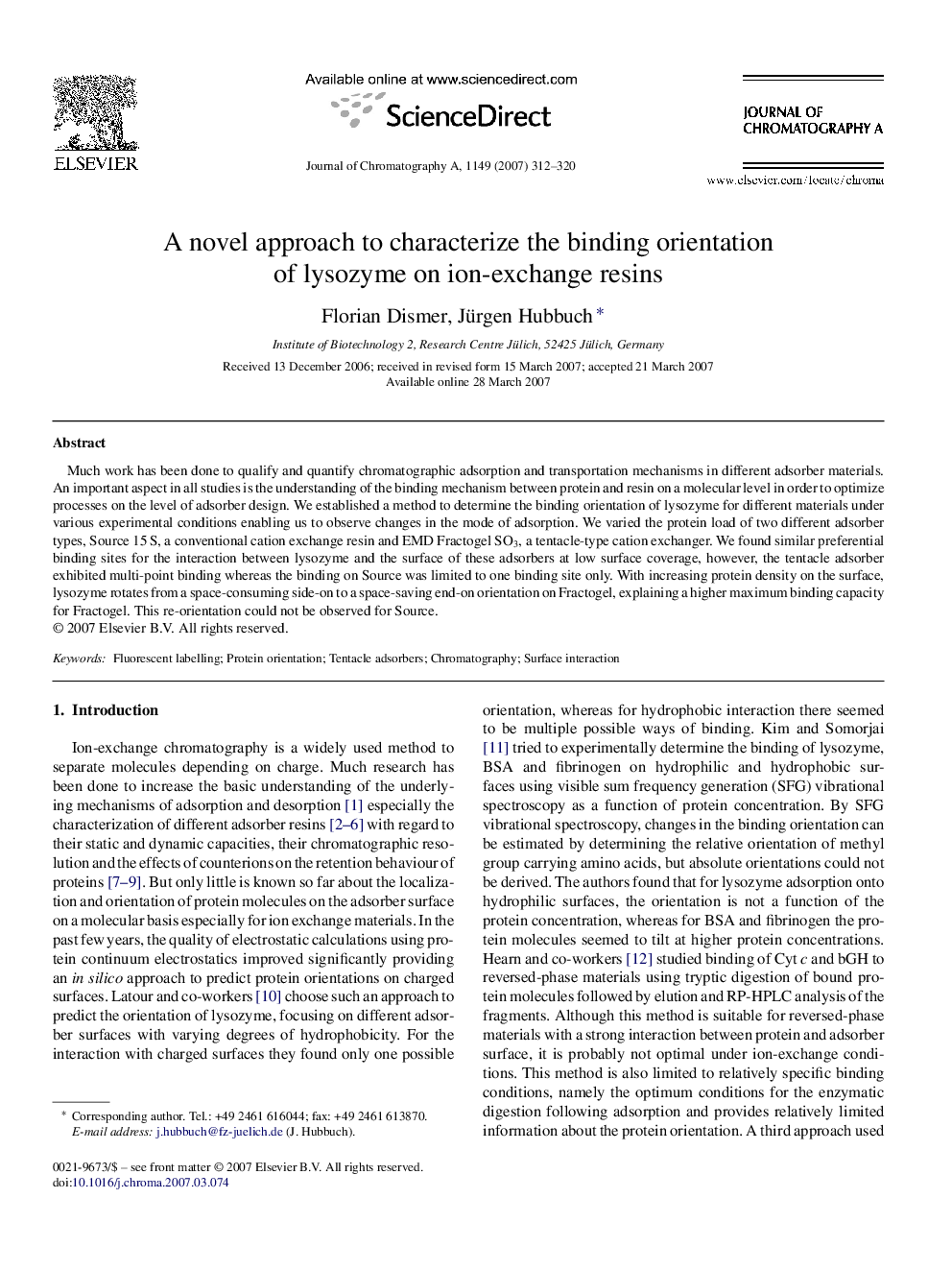| Article ID | Journal | Published Year | Pages | File Type |
|---|---|---|---|---|
| 1207733 | Journal of Chromatography A | 2007 | 9 Pages |
Much work has been done to qualify and quantify chromatographic adsorption and transportation mechanisms in different adsorber materials. An important aspect in all studies is the understanding of the binding mechanism between protein and resin on a molecular level in order to optimize processes on the level of adsorber design. We established a method to determine the binding orientation of lysozyme for different materials under various experimental conditions enabling us to observe changes in the mode of adsorption. We varied the protein load of two different adsorber types, Source 15 S, a conventional cation exchange resin and EMD Fractogel SO3, a tentacle-type cation exchanger. We found similar preferential binding sites for the interaction between lysozyme and the surface of these adsorbers at low surface coverage, however, the tentacle adsorber exhibited multi-point binding whereas the binding on Source was limited to one binding site only. With increasing protein density on the surface, lysozyme rotates from a space-consuming side-on to a space-saving end-on orientation on Fractogel, explaining a higher maximum binding capacity for Fractogel. This re-orientation could not be observed for Source.
